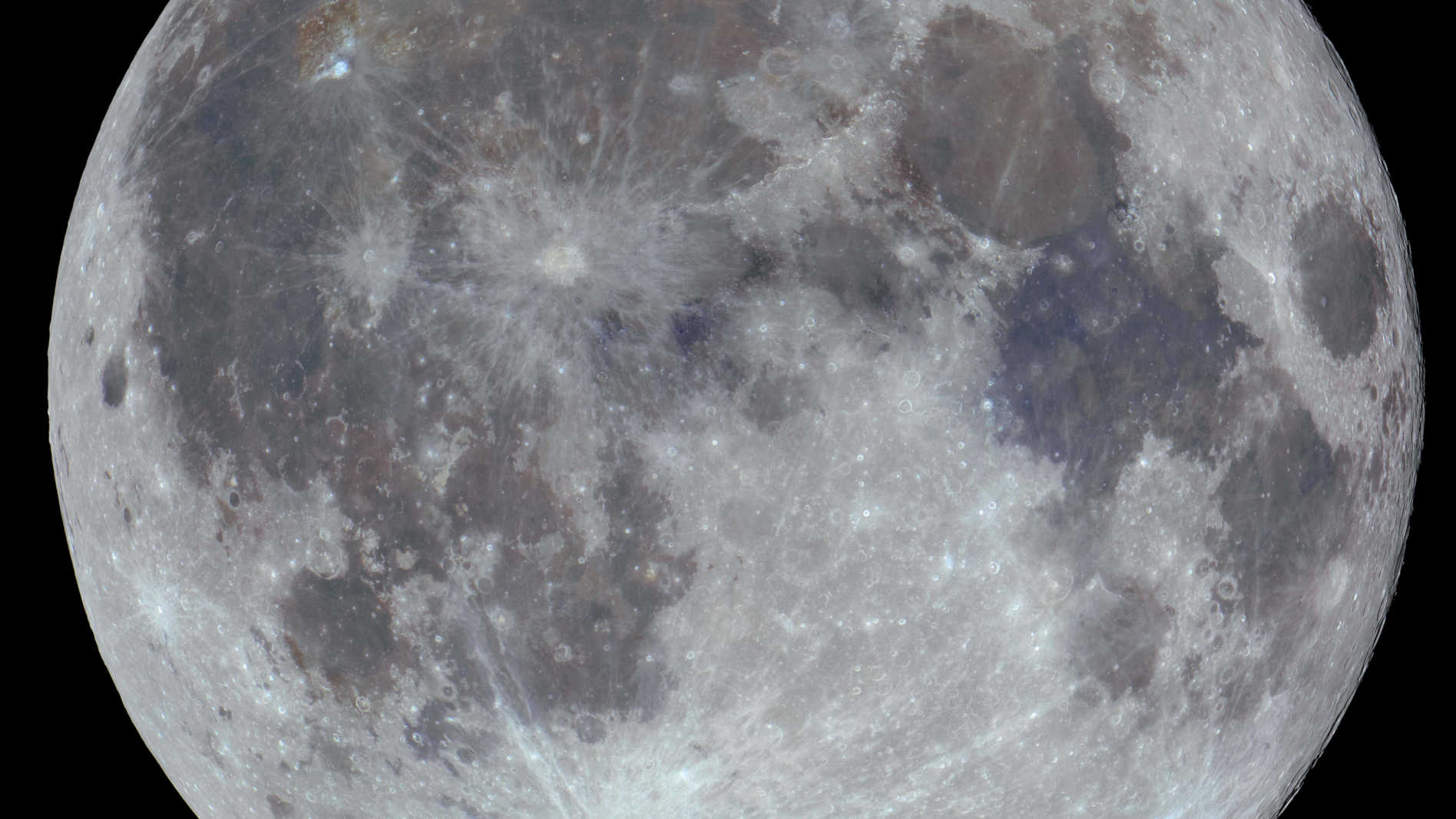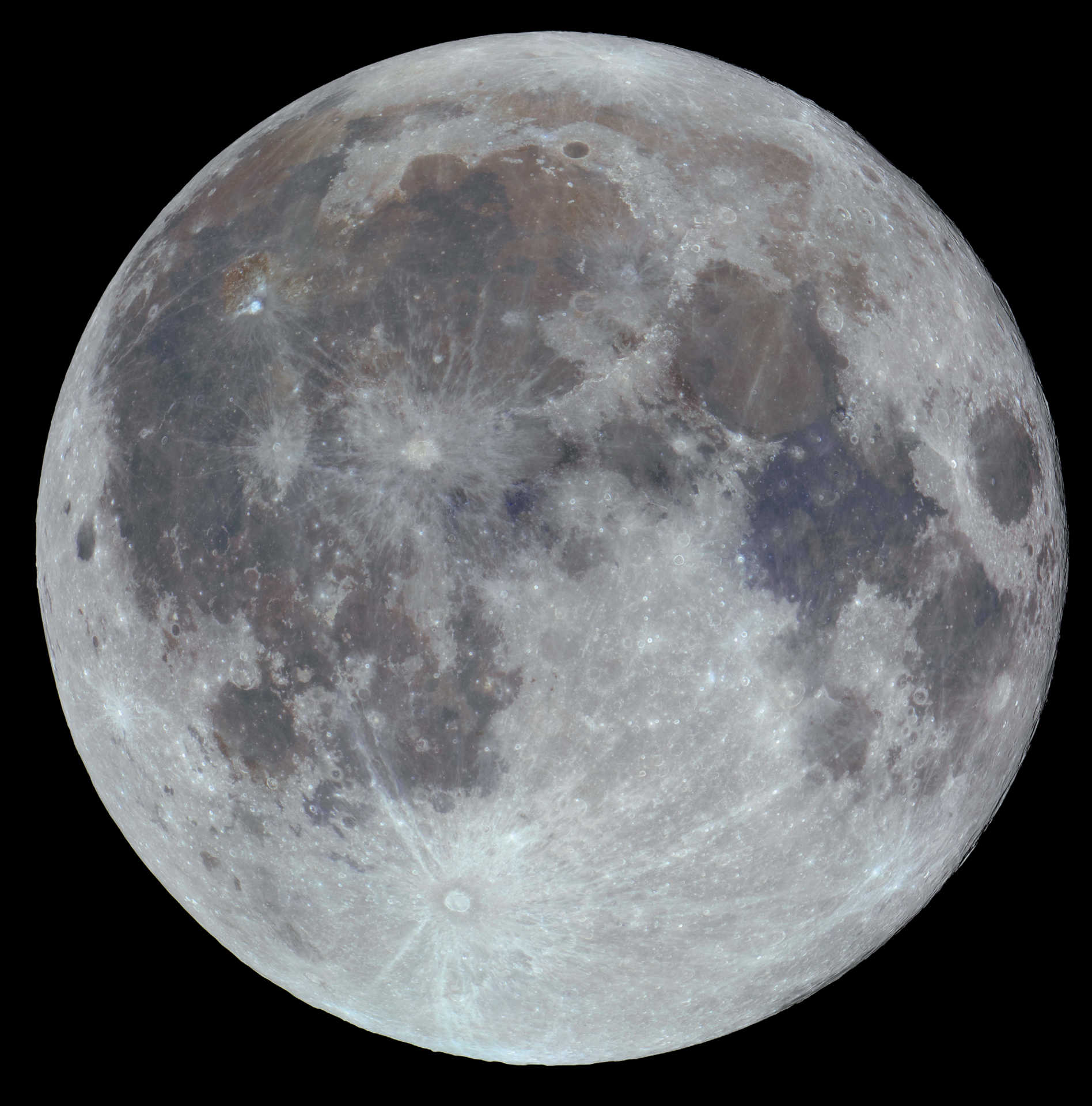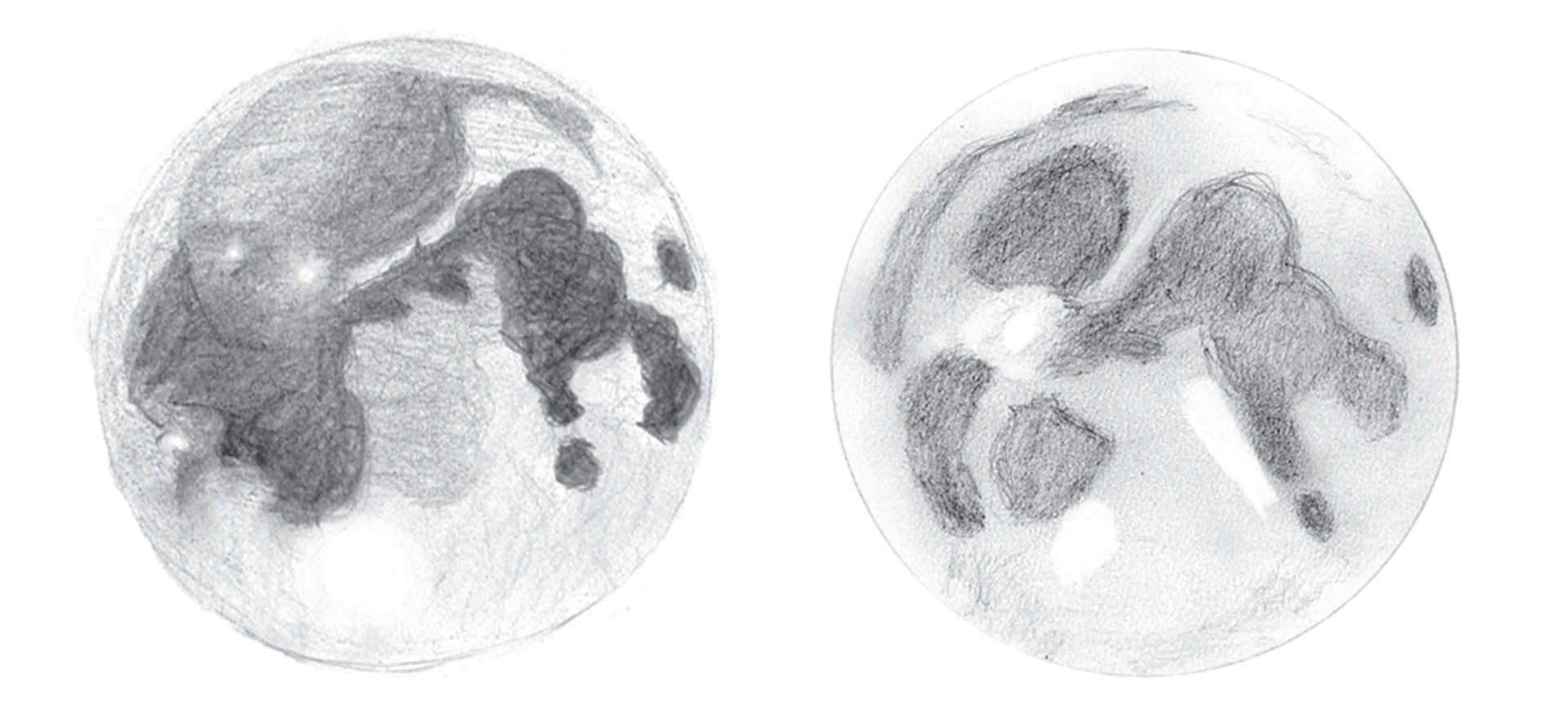The Moon with nothing added
You can discover regions of craters and mountain ranges on the Moon simply with the naked eye. You’ve surely already tried it!
 Rolf Hempel
Rolf HempelObserving the Moon with the naked eye
 At full Moon, lunar mare, highlands, and ray systems are visible in their entirety. Rolf Hempel
At full Moon, lunar mare, highlands, and ray systems are visible in their entirety. Rolf HempelThe Moon is a popular observation target, because a large number of lunar formations can be seen – even with a small telescope. But the naked eye can also reveal much more than just the famous Man in the Moon. Besides dark lunar seas and bright highland regions, areas of craters and mountain ranges can also be identified.
Of course, a quick first glance at the Moon will reveal the most striking feature on the lunar surface: apparently bright regions alternating with darker ones. These darker grey areas cover around 30% of the visible side of the Moon and are known as maria (Latin: mare/maria). Maria are actually craters created by huge meteorite impacts, which were then flooded with magma that emerged from the punctured lunar crust. The colour is caused by cooled rock: it is dark basalt lava. Mare Imbrium (Sea of Showers), with a diameter of 1,300km, is the largest circular lava plain on the lunar surface. At full Moon, the lunar maria are visible in their entirety and you can have a go at identifying as many of them as you can. The bright, whitish areas of the Moon, on the other hand, are called highlands (Latin: terra/terrae). These areas are the original ancient lunar crust, which formed after the surface cooled.
 Two drawings of the full Moon as seen with the naked eye. The Tycho ray system is visible as a brighter area with the naked eye. You should also be able to identify Copernicus and Kepler. Lambert Spix, Kay Hempel
Two drawings of the full Moon as seen with the naked eye. The Tycho ray system is visible as a brighter area with the naked eye. You should also be able to identify Copernicus and Kepler. Lambert Spix, Kay HempelBright corona
To the south of the Moon is a particularly extensive highland region. The roughly triangular section consisting Terra Fertilitatis (Land of Fertility) and Terra Sanitatis (Land of Healthiness) stretches up to the middle of the Moon. In the southern section of the highlands you will find Tycho, a crater formed about 100 million years ago that boasts the brightest and most extensive ray system on the Moon. This is composed of bright rock that was ejected during the formation of the crater. Once your eye has become accustomed to the Moon’s brightness, you should be able to detect differences in brightness across the highlands. The Tycho ray system is visible as a brighter circular area, allowing you to indirectly locate the crater.
Cassini's white cloud
It is even possible to detect differences in brightness within the ray systems. There is a region northeast of Tycho that is slightly brighter than the ray system itself. Here you will find “Cassinis bright spot”. In fact, this is the 5km wide crater Hell Q, part of the much larger Deslandres crater with an extremely bright halo, which is one of the brightest spots on the visible side of the Moon. The formation “Cassini's bright spot” is named after the French astronomer Giovanni Domenico Cassini, who was probably observing this location when he described a "bright whitish cloud" during his lunar observations in the autumn of 1671.
More precisely
But we can be even more precise. Because the two craters Copernicus and Kepler can also be identified by their bright crowns of rays – albeit with a little more difficulty. They are located in the middle of the Oceanus Procellarum (Ocean of Storms). The Montes Apenninus (Apennine Mountains) acts as a signpost. These are visible to the naked eye when the Sun is high, for example at full Moon, as a bright dividing line between the Mare Serenitatis (Sea of Serenity) and the Mare Imbrium. If you extend the curved line of the mountains to the west, you will arrive first at the bright patch that is Copernicus and then the smaller light Kepler. Identifying Aristarchus is rather more challenging. The interior of the crater, which is just 46 km across, is home to the brightest material on the visible side of the Moon. The best way to find this small bright spot in the dark Oceanus Procellarum is to extend a line from Copernicus and Kepler at a right angle to the north west.
Even when observing with the naked eye, it is worth documenting your observations graphically in order to record your progress. Over time, you can train your eye to perceive faint details so that, with a little patience, different lunar landscape can be recognized, even if the moon itself is only around 0.5° wide in the sky.
Author: Lambert Spix / Licence: Oculum Verlag GmbH
